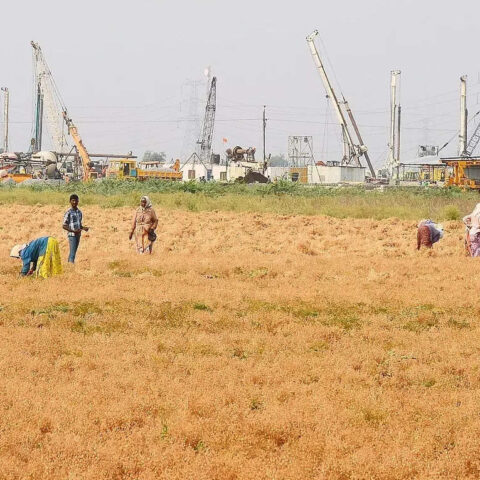
NOIDA: In the first half of the fiscal year, the Yamuna Expressway Industrial Development Authority (YEIDA) generated Rs 982.51 crore in revenue, marking an increase of over Rs 200 crore compared to the same period last year, when YEIDA earned Rs 708 crore. However, the Authority’s expenses surpassed its earnings — with the total spending reaching Rs 1,301 crore in this period.
A large portion of this expenditure, around Rs 799 crore, was directed toward land acquisition — more than double the Rs 362 crore spent on the same last year. According to officials, the Authority is focused on creating a substantial land bank to support future developments along the expressway corridor.
Land acquisition was not the only segment that saw a rise in expenditure this year, with airport-related expenditures going up to Rs 204 crore from last year’s Rs 164 crore.
The budget allocated for development work also saw a slight increase, up by Rs 4 crore at Rs 214 crore, compared to Rs 210 crore last year.
Meanwhile, the revenue for the first half of the fiscal year saw a significant boost due to a sharp rise in group housing projects. Revenue from this segment jumped from Rs 31 crore during this period last year to Rs 446 crore this year. This rise was thanks in part to the state govt’s rehabilitation package for stalled projects, based on recommendations from the Amitabh Kant committee, officials noted.
Other revenue sources included Rs 270 crore from industrial projects, Rs 10.14 crore from commercial developments, Rs 63 crore from institutional sectors, and Rs 114 crore from residential plots.
YEIDA CEO Arun Vir Singh said, “The revenue and expenditure figures for the period from April 1 to Sept 20 will be presented at the board meeting on Thursday.”
For the current financial year, land acquisition remains the authority’s largest expense, with a budget of Rs 6,063 crore allocated for this purpose out of the total Rs 10,000 crore.
YEIDA has already submitted a proposal to acquire 1,700 hectares of land to the district administration as part of its ongoing strategy to build a robust land bank for future projects.









